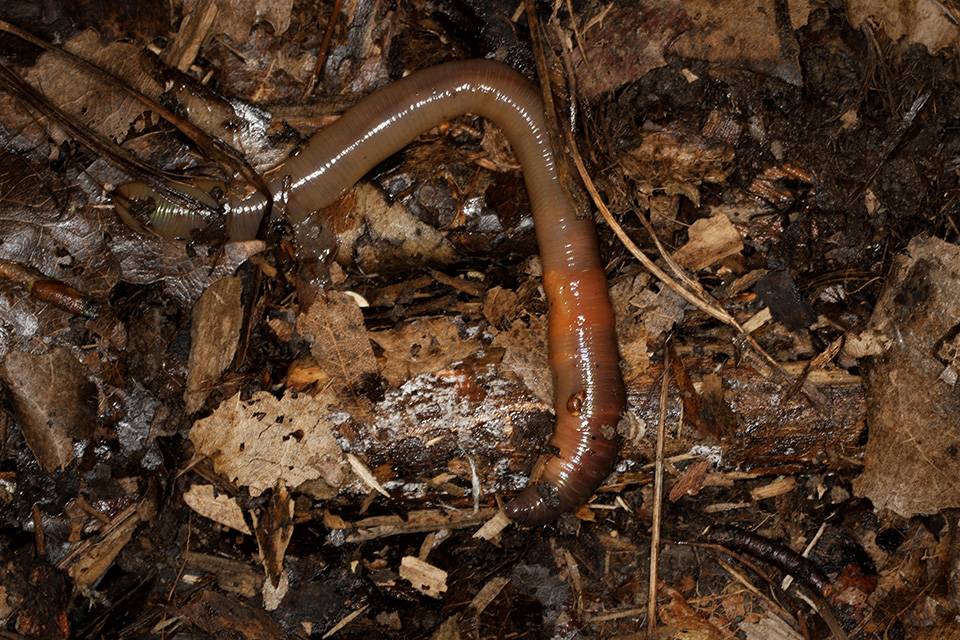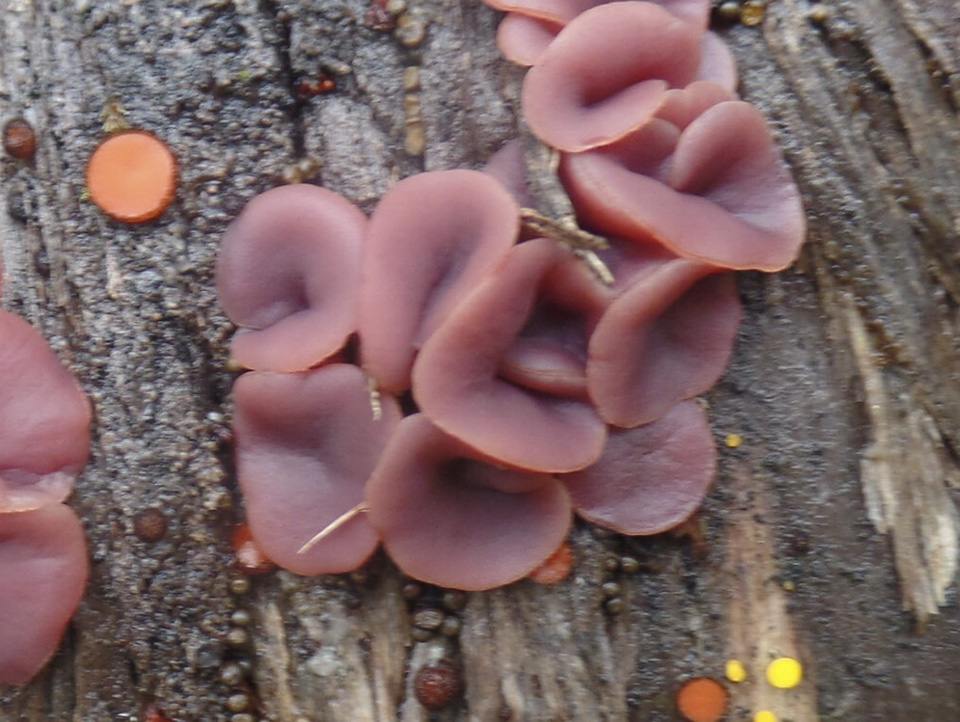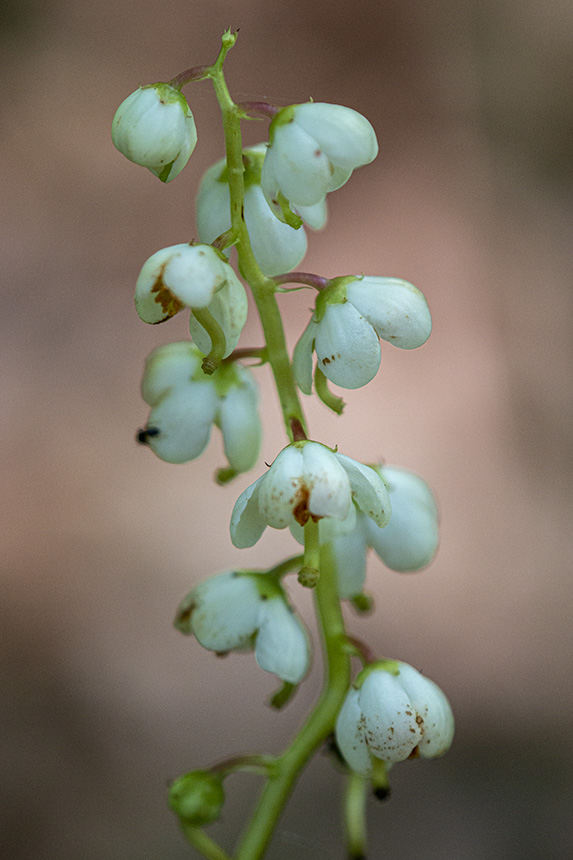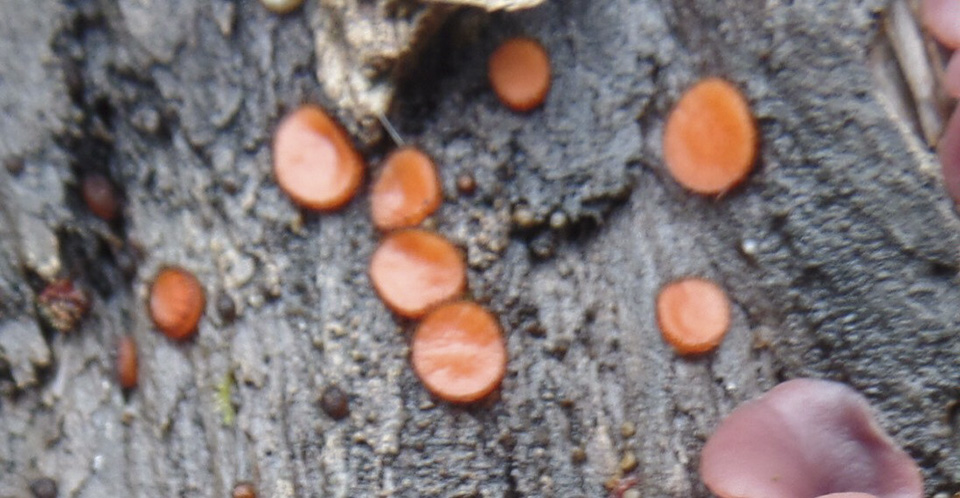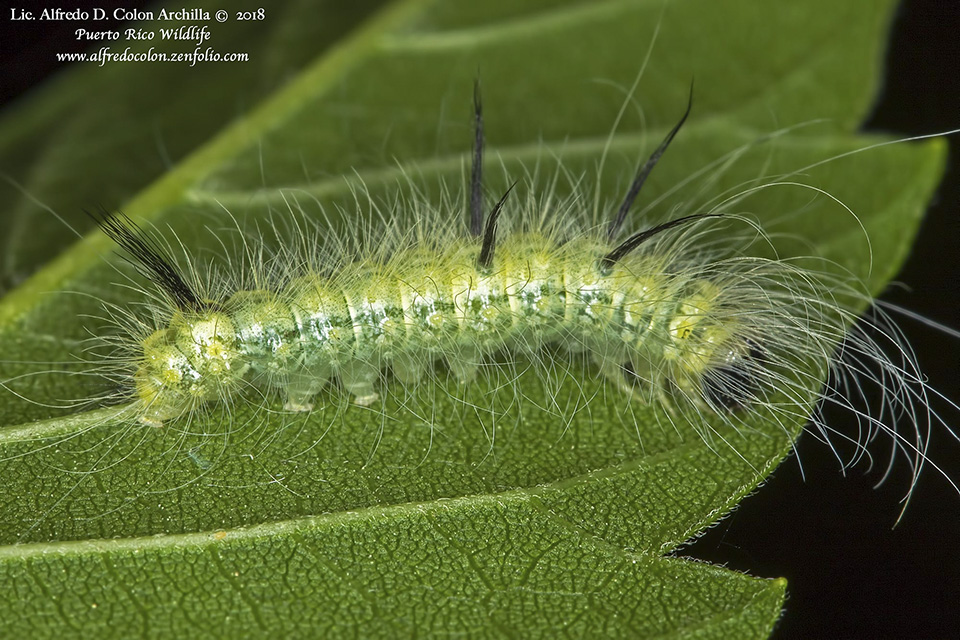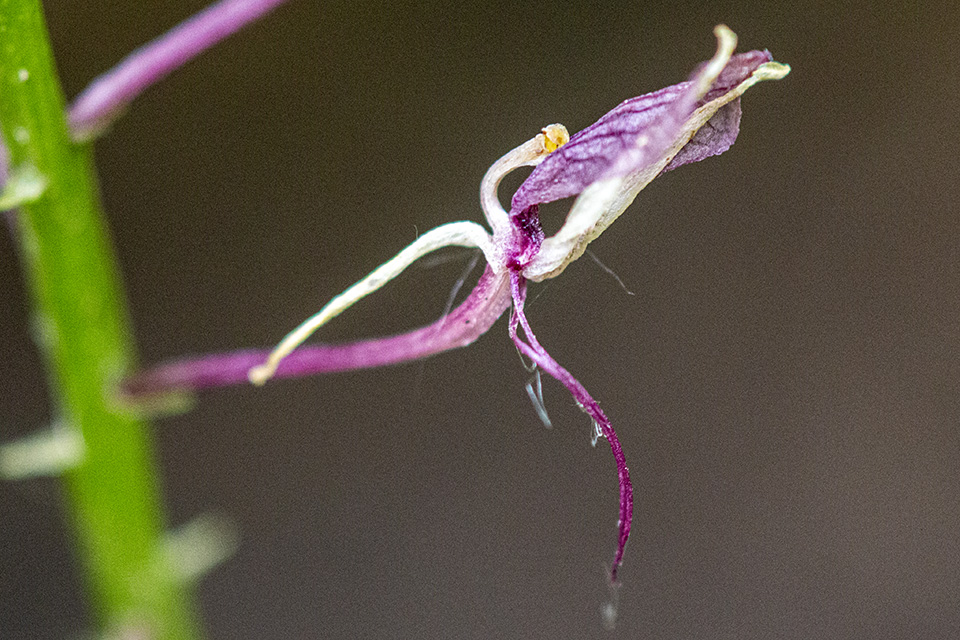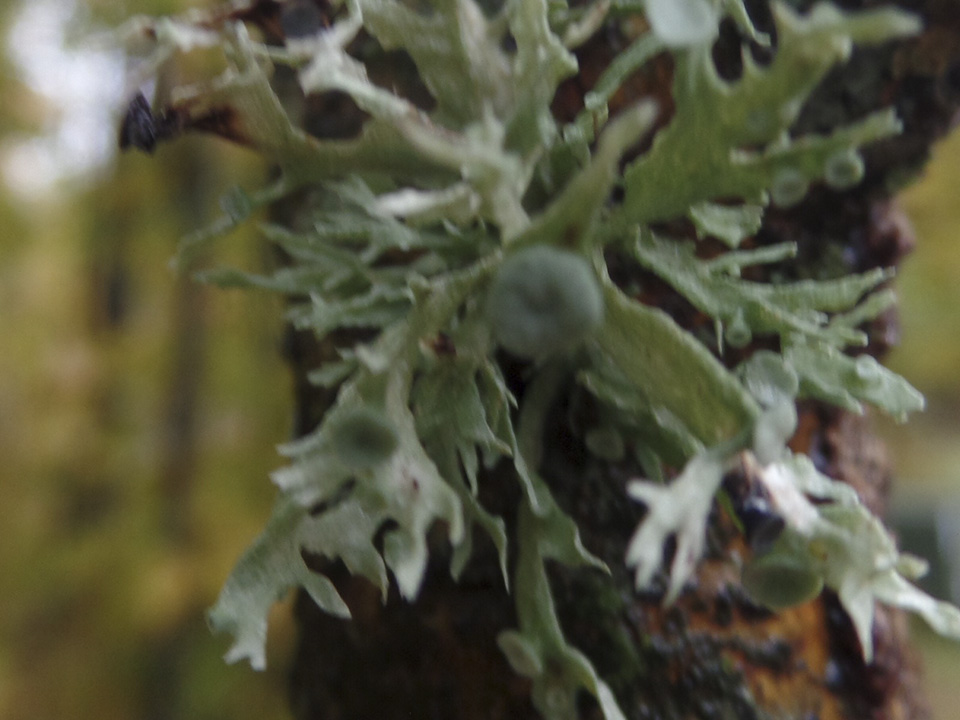
Sinewed Bushy Lichen (Ramalina americana) is widespread and very common. It occurs in the eastern deciduous forests of the United States and southern Canada, and in the mountainous forests of Mexico. In Minnesota it is very common in the north, scattered to absent in the south. It is found on bark of old hardwood trees, usually in full sun, mostly on twigs and branches in the upper canopy but also on the trunk. It is more sensitive to air pollution than most lichens, and is absent from areas with even mild air pollution.
Sinewed Bushy Lichen appears as a short, shrubby, yellowish-green tuft. The branches are narrow, straight-sided, flattened, solid, and strongly ridged and channeled. Yellow, disk-like, spore-producing structures are frequent and large. They appear at or close to the tips of the branches. They are usually flat but often contorted.
http://www.minnesotaseasons.com/Fungi/Sinewed_Bushy_Lichen.html

